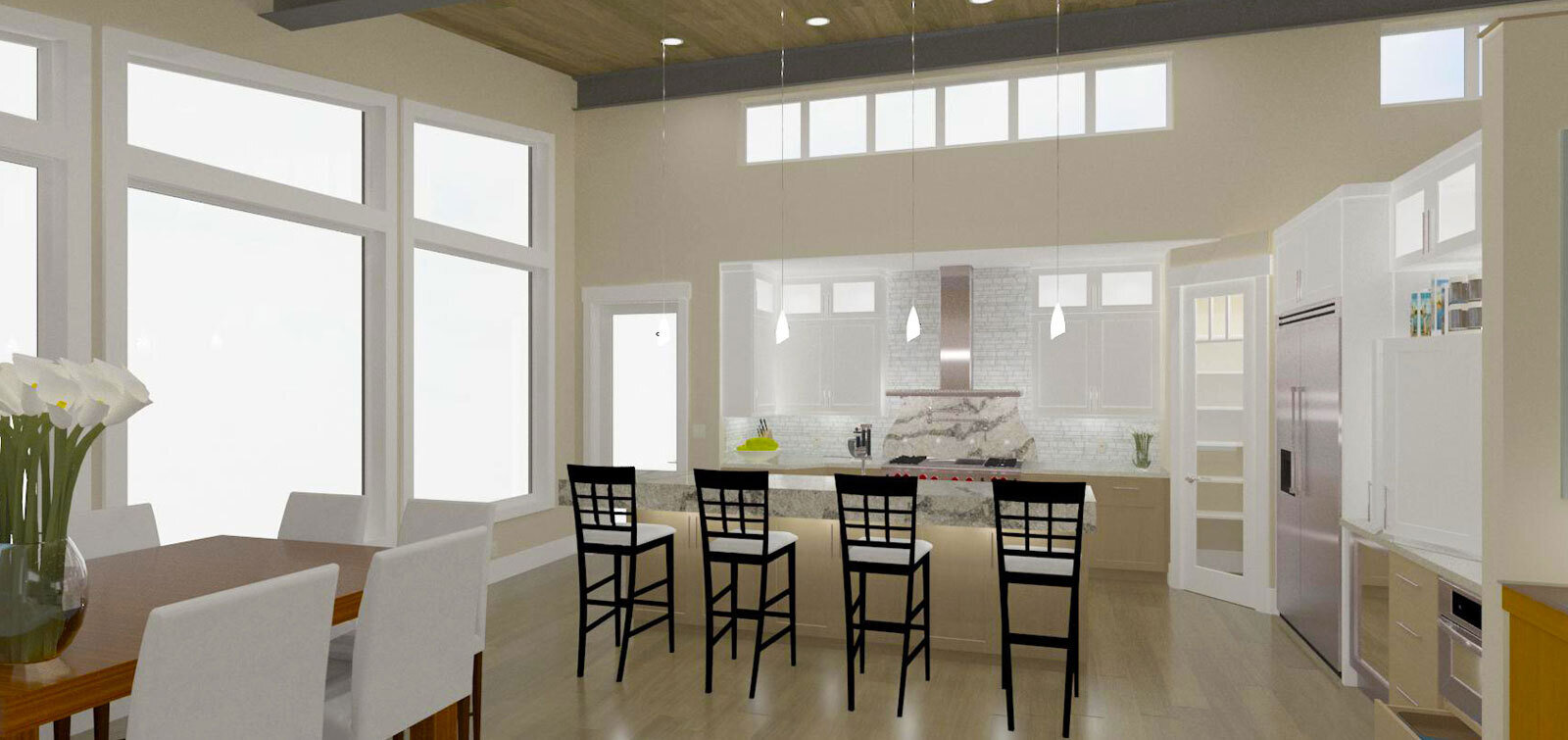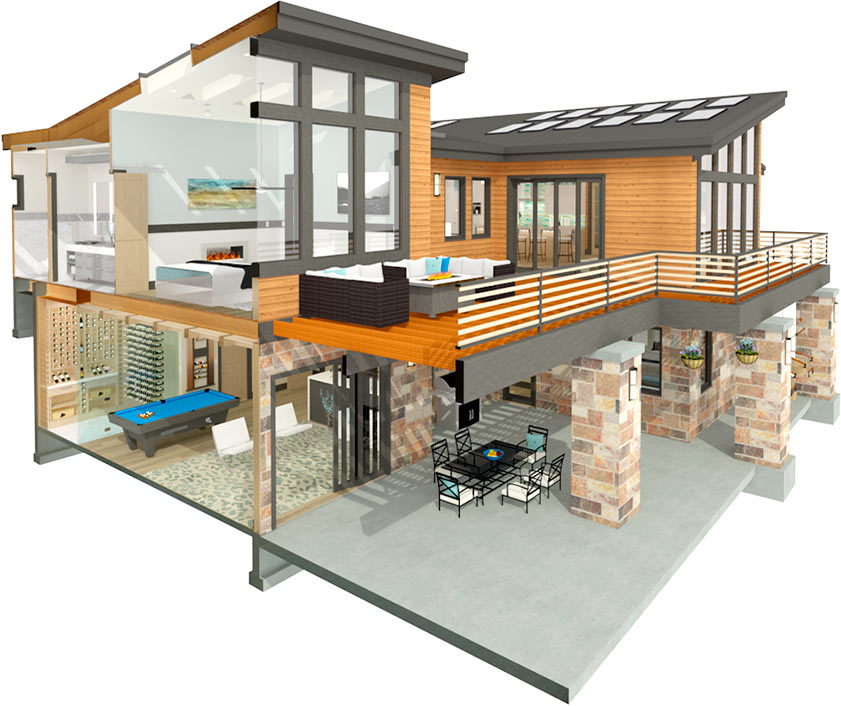If you’re looking for a powerful and professional 3D rendering software, then you need to check out Chief Architect. This software is used by architects and engineers to create detailed 3D models of buildings and other structures. With Chief Architect, you can create photo-realistic renderings of your designs, so you can see what they would look like in real life. You can also create animations and fly-throughs of your projects, so potential clients can get a better idea of what you’re proposing. If you’re not an architect or engineer, don’t worry! Chief Architect is designed to be user-friendly, so anyone can learn to use it with ease. In just a few minutes, you can create stunning 3D images of your own designs.
What is 3D rendering?
3D rendering is the process of creating a three-dimensional image from a computer model. The model is typically a wireframe representation of a three-dimensional object, which can be anything from a simple geometric shape to a complex architectural scene. Rendering software creates an image by simulating the way light would interact with the object.

There are several different types of 3D rendering techniques, each with its own strengths and weaknesses. The most common type of rendering is called ray tracing, which creates very realistic images but can be quite slow. Another popular technique is called scanline rendering, which is much faster but can produce images that look less realistic.
Rendering software often includes tools for creating special effects such as shadows, reflections, and refractions. These effects can make an image look more realistic, but they can also make it look more stylized.
The different types of 3D rendering
There are different types of 3D rendering, each with their own advantages and disadvantages. Here are some of the most popular methods:
Ray tracing
Ray tracing is a popular method for creating photo-realistic images. It works by tracing the path of light through a scene and computing the colour of each pixel based on the objects in the scene and their interaction with light. This method can produce very realistic results, but it is computationally expensive and requires powerful hardware to render complex scenes in real-time.

Rasterization
Rasterization is a faster but less accurate method for generating 3D images. It works by projecting the 3D scene onto a 2D plane and then sampling pixels from that projection to generate the final image. This method is not as accurate as ray tracing, but it can be used to render complex scenes in real-time on lower-end hardware.
Radiosity
Radiosity is a method for simulating how light reflects off surfaces in a scene. It computes the colour of each pixel based on the diffuse reflectance of nearby surfaces. This method can produce very realistic results, but it is computationally expensive and requires powerful hardware to render complex scenes in real-time.
Path tracing
Path tracing is a Monte Carlo method for generating photo-realistic images. It works by randomly tracing paths of light through a scene and computing the color of each pixel based on the objects in the
Pros and cons of 3D rendering
There are a few key things to keep in mind when considering 3D rendering for your home design project. Below are some pros and cons to help you make an informed decision.
Pros:
- 3D rendering can help you get a realistic sense of what your home will look like once it’s built. This is helpful in the design process as you can make changes early on if needed.
- It can be helpful in the construction process as well, particularly if there are any issues that need to be worked out ahead of time.
- Rendering also allows you to experiment with different materials and finishes to see how they would look in your space. This can be helpful in making final decisions on things like flooring, cabinetry, and countertops.

Cons:
- 3D rendering can be costly, particularly if you need multiple rounds of revisions.
- It can also take some time to get the final product, so if you’re working on a tight timeline it may not be the best option.
What is the best software for 3D rendering?
There are many software programs that can be used for 3D rendering. Some of the more popular ones include Chief Architect, 3ds Max, and Maya. Each has its own strengths and weaknesses, so it’s important to choose one that will best suit your needs.
Chief Architect is a great choice for those who want to create detailed, realistic renderings. It’s easy to use and has a wide range of features, making it perfect for both beginners and experts alike.
3ds Max is another popular option for 3D rendering. It’s known for its powerful tools and flexible interface. This makes it ideal for complex projects that require a lot of customization.
Maya is another top choice for 3D rendering. It offers a wide range of features and is very user-friendly. However, it can be expensive, so it’s important to compare prices before you buy.
How to get started with 3D rendering?
When it comes to 3D rendering, there are a few things you need to know before getting started. Here are the basics of what you need to get started with 3D rendering:
- Choose your software: There are many different software programs that can be used for 3D rendering. Some of the more popular ones include 3ds Max, Maya, Cinema 4D, and Blender.
- Learn the basics: Once you’ve chosen your software program, it’s time to start learning the basics. This includes things like learning how to create basic shapes, working with lighting and materials, and understanding how to render your scenes.
- Experiment: The best way to learn is by doing. So once you’ve got the basics down, start experimenting with different techniques and see what works best for you.
- Get feedback: Once you’ve created some renders, don’t forget to get feedback from others. This can help you improve your skills and learn new tips and tricks.

Alternatives to 3D rendering
There are many alternatives to 3D rendering. Some popular options include:
- 2D drawing: This is the traditional method of creating architectural drawings. Although it doesn’t provide the same level of realism as 3D rendering, it can be a very effective way to communicate your design ideas.
- SketchUp: This is a popular 3D modelling program that can be used to create realistic images of your designs.
- Photoshop: Photoshop is a powerful image-editing program that can be used to create realistic renderings of your designs.
There are many other software programs that can be used to create realistic images of your designs. These are just a few of the most popular options.
Conclusion
Overall, we think Chief Architect is a great 3D rendering software option for those in the architectural field. Its intuitive design interface and vast array of features make it a valuable tool for anyone looking to create high-quality 3D renderings. While its price point may be a bit higher than some of its competitors, we believe that the quality of its renderings justifies the cost.





